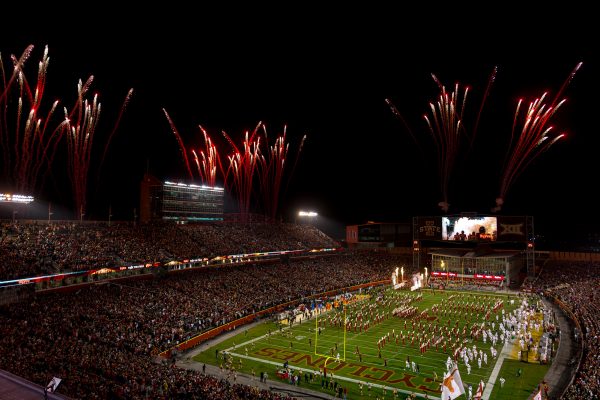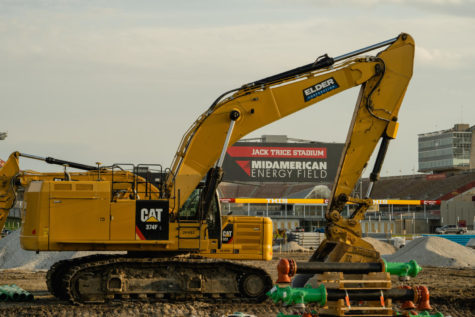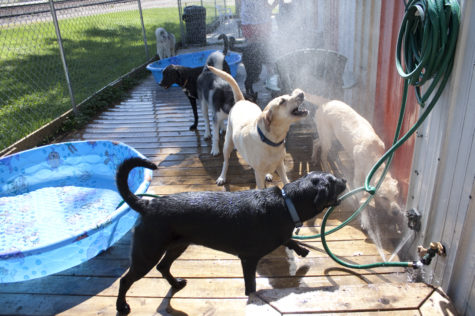Building codes to be reviewed
October 26, 2009
In the next few months, the Ames City Council will explore whether or not to require the installation of fire sprinklers in new one-family and twofamily homes.
Every three years the International Code Council releases a new suite of building codes, which are debated, amended and approved for use in Ames the following year.
“Most jurisdictions in America adopt these national codes with local amendments,” said Clint Petersen, Ames fire chief.
Petersen said the past two times he’s been involved in the code updates, they’ve been fairly noncontroversial, but that this time will be an exception.
In a presentation to the City Council on Tuesday, Petersen outlined his case for passage of the sprinkler mandate. He said today’s fires burn more quickly and leave less time for rescue because of changes in building techniques and materials.
Petersen said today’s homes are built with lightweight trusses, which burn faster than the large old-growth beams used in the construction of older homes.
In addition, today’s homes are full of synthetic materials, such as plastic, which has 10 times the burnable energy of wood, he said.
“The average home has 1,700 pounds of plastic in it,” Petersen said.
The cost of such a sprinkler system, Petersen said, is up for debate.
“I’ve heard it as high as $6 per square foot, I’ve heard it as low as 92 cents per square foot,” Petersen said.
He acknowledged that his presentation was the beginning of a long process, and that many details still need to be worked out.
“By opening this dialogue, we expect you’re going to hear from local builders and developers,” Petersen told the council. “There’s a lot of work to be done and a lot of voices to be heard.”
One of these voices is that of Randy Rathert, owner of Rathert Construction, 431 Whitney Ave., who builds about five homes a year.
Rathert said he thinks home sprinklers are wonderful, but with a capital investment this large, the homeowner should have the opportunity to choose whether or not to invest in a system.
“It should be up to the customer to make that decision,” he said.
In addition, Rathert said mandatory codes that significantly raise the cost of building a home can cause problems for local builders.
Appraisal of a new home’s value is dependent upon existing market data, so an appraisal won’t immediately reflect the cost of new code-compliant requirements. That means if a builder or client approaches a financial institution for a construction loan after the passage of expensive new codes, the appraisal may undervalue the home, and the subsequent loan will be less than the builder or client needs.
On the other side, when the builder tries to sell the home for a price that includes code-compliance costs, Rathert said the real estate agent and buyer will see the lower appraisal and consider the home overpriced.
Rathert said builders experienced this with the 2006 International Residential Code adopted in 2007.
“We’ve had them hit us so hard, so fast in the last three years, it’s affected the valuation of the home,” Rathert said. “Unfortunately, right now I think that we’re eating a lot of it.”
Additionally, expensive codes can increase the cost of housing in Ames. Rathert said that since the last round of codes came into effect, about 2 percent of his cost of building a home has been related to maintaining compliance with building codes. Additional requirements, such as the installation of the proposed sprinkler systems, would be paid for not by the builder, but by the family buying the home.
“We pass it right on to the homeowner,” Rathert said.
These increased costs could make living in Ames less competitive than in neighboring towns or developments outside the city.
“I can save, literally, thousands of dollars by building outside of the city limits,” Rathert said.
As a member of Ames Building Code Board of Appeals, Rathert will have the opportunity to voice his concerns as he works with city officials and other builders to amend the codes before they’re voted on sometime next year.
With thousands of building codes — the code books stand about a foot high on Rathert’s desk — it’s a big job.












